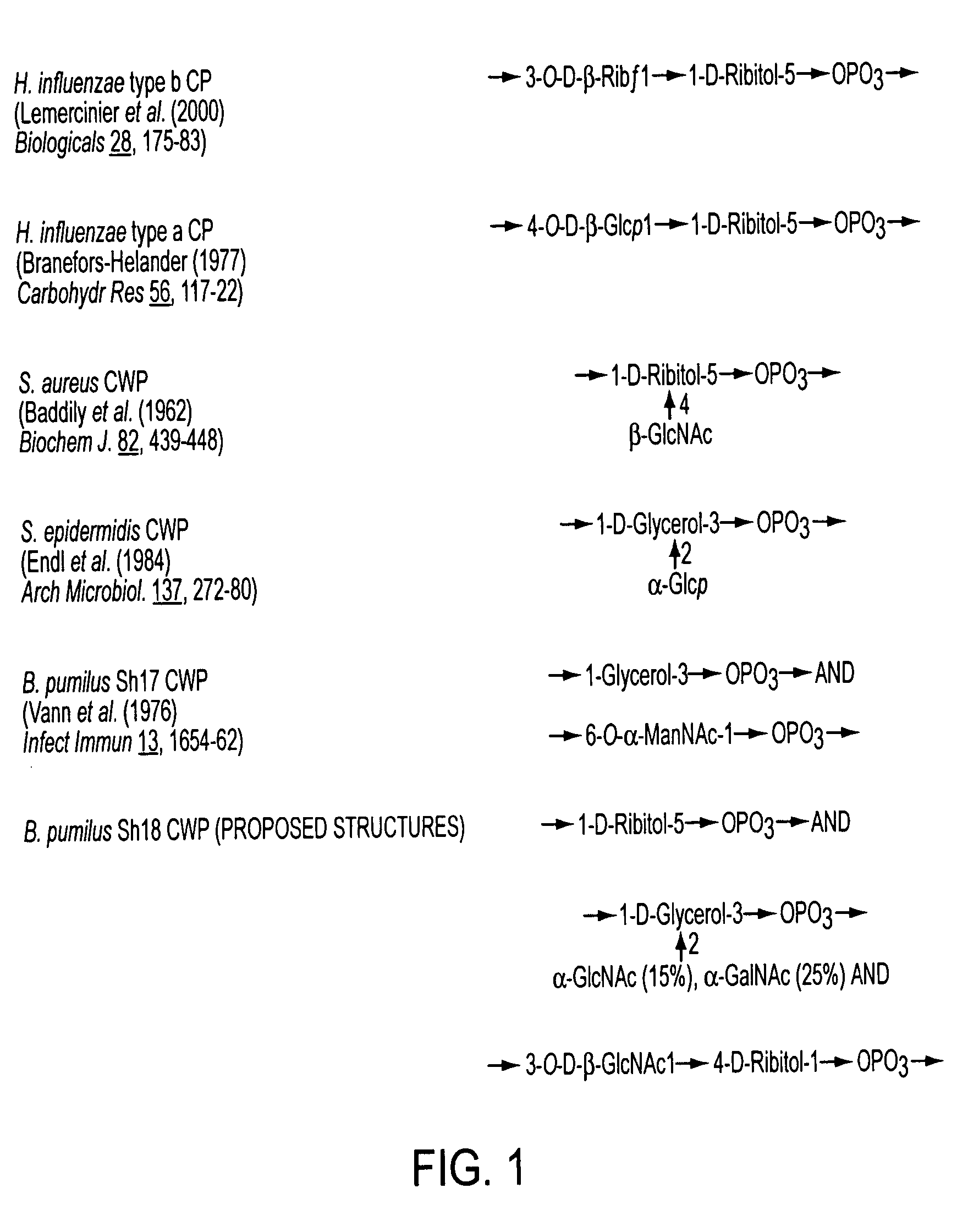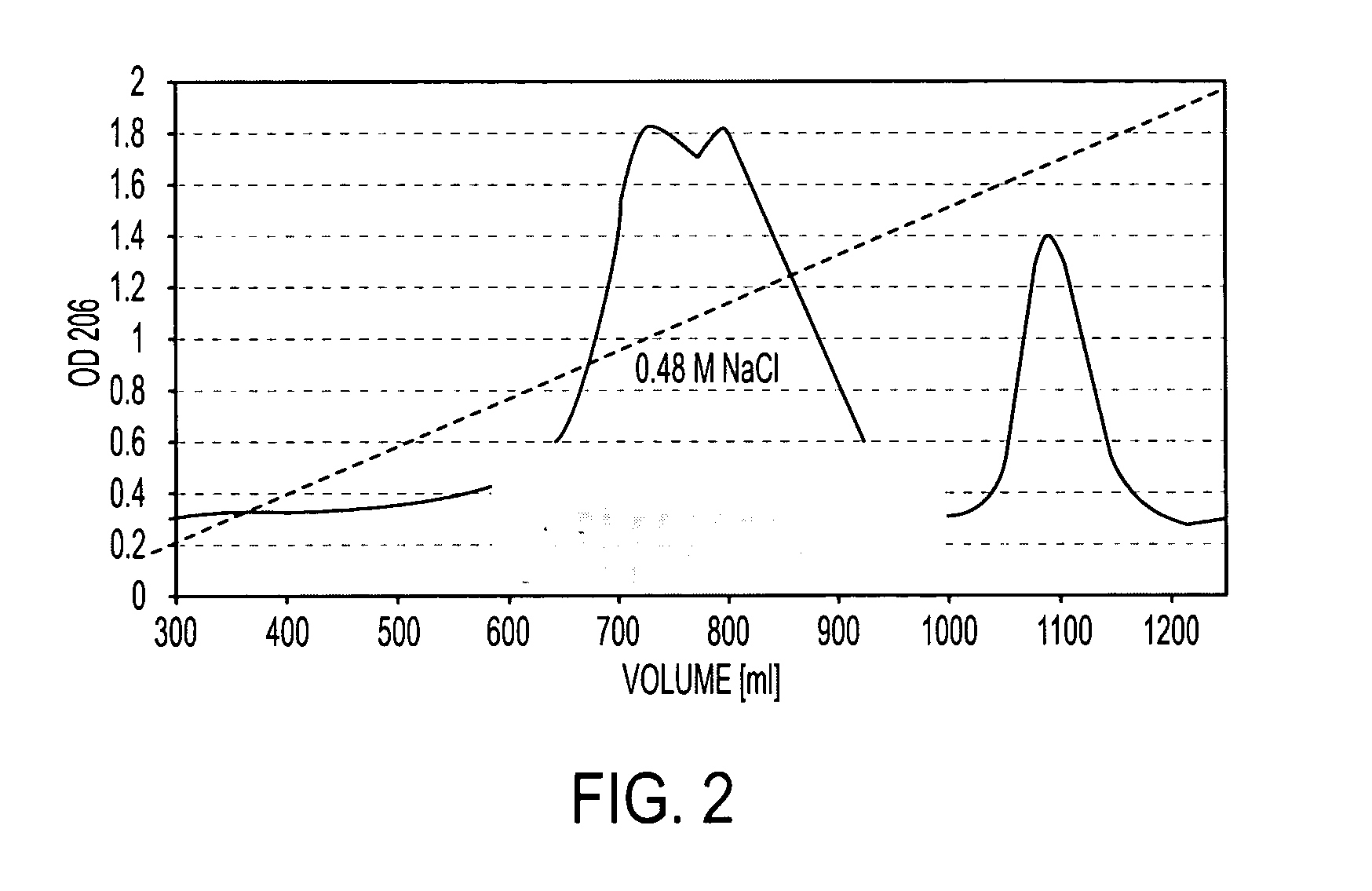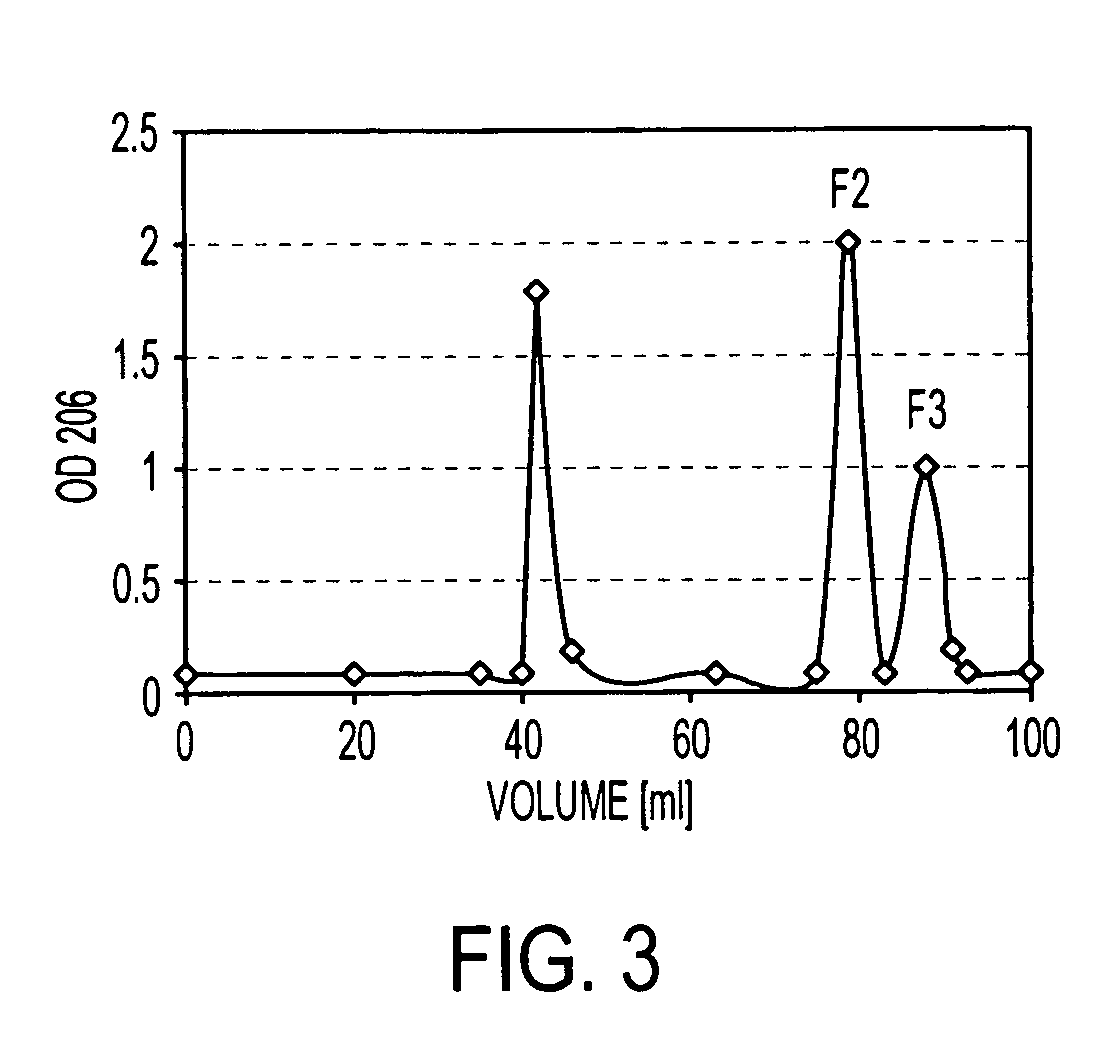Antimultiorganism Glycoconjugate vaccine
a glycoconjugate and multi-organ technology, applied in the field of cell wall polysaccharide preparation, can solve the problems of wound infections and infections associated with catheters and prosthetic devices
- Summary
- Abstract
- Description
- Claims
- Application Information
AI Technical Summary
Benefits of technology
Problems solved by technology
Method used
Image
Examples
example i
Materials and Methods
A. Bacterial Strains
[0085] The following bacterial strains were used in this study: Bacillus pumilus Sh 18 and Sh 17 (Meyrowitz et al. (1973), Infect Immun. 8, 896-900); Heamophilus influenzae type b (Eagan and Rab); Heamophilus influenzae type a strain Harding; Staphylococcus aureus type 5 strain Lowenstein; and Staphylococcus epidermidis RP-62A (ATCC 35981). Bacillus pumilus Sh 18 was obtained from the ATCC collection.
[0086]B. pumilus Sh 18 and Sh 17 were cultured in the ultrafiltrate of Tryptic Soy Broth (TSB), H. influenzae type a and b as previously reported (Schneerson et al., (1980), J Exp Med. 152, 361-76), S. aureus as described (Fattom et al. (1990), Infect Immun. 58, 2367-74), and S. epidermidis on chemically-defined medium (Hassain et al, (1991), J. Med Microbiol 34, 143-47).
B. Cell Wall Polysaccharide
[0087] Capsular polysaccharides (CP) from H. influenzae types a and b, and cell wall polysaccharides (CWP) from S. aureus and B. pumilus Sh18 an...
example ii
Isolation and Characterization of B. pumilus Sh 18 CWP
[0105]B. pumilus Sh18 CWP was eluted from a Sepharose CL-6B column with a Kd of 0.5 and from a Sephadex DEAE column by 0.48 M NaCl. In both cases, the CWP showed size and charge heterogeneity. The use of other sizing columns did not separate this peak into more components. This peak was divided into 5 fractions and compositional analysis of the eluted fractions showed that each contained ribitol, glycerol, and amino sugars, but in different molar ratios. The peak from the DEAE-Sephadex column that reacted with anti-Hib serum (FIG. 2), designated as Sh 18-CWP, was further characterized.
[0106] GLC-MS analysis of Sh18 CWP detected peracetylated derivatives of glycerol, ribitol, glyucosamine, and galactosamine (Table 1), and the CWP contained 10.7 wt % of phosphorous. HF hydrolysis (48% HF, 1 hat 60° C.) released only ribitol and glycerol, whereas additional hydrolysis with HCl released amino sugars, indicating that they are bound ...
example iii
Immunological Properties
[0110] Sh18-CWP reacted by double immunodiffusion with anti-Hib and anti-S. epidermidis antibodies with a strong precipitation line and showed a weaker line with anti-S. aureus teichoic acid serum. Immunoelectrophoresis with the intermediate gel containing anti-Hib and the upper gel containing anti-S. epidermidis serum showed that part of the CWP was captured by the anti-Hib, whereas some migrated further and precipitated with the anti-S. epidermidis serum. Similar results were obtained when the order of the antisera in the gels was reversed. These data suggest that at least some of the poly(glycerol phosphate) and poly(ribitol phosphate) chains of Sh18-CWP were not bound. To further address the question of possible linkage between the polymers, Sh18 CWP was precipitated with anti-Hib serum, and the resulting precipitate was washed and analyzed by GLC-MS. The analysis revealed glycerol, ribitol and glucosamine in the ratio: 0.2:1.0:0.1. Without wishing to be...
PUM
| Property | Measurement | Unit |
|---|---|---|
| temperature | aaaaa | aaaaa |
| temperature | aaaaa | aaaaa |
| concentration | aaaaa | aaaaa |
Abstract
Description
Claims
Application Information
 Login to View More
Login to View More - R&D
- Intellectual Property
- Life Sciences
- Materials
- Tech Scout
- Unparalleled Data Quality
- Higher Quality Content
- 60% Fewer Hallucinations
Browse by: Latest US Patents, China's latest patents, Technical Efficacy Thesaurus, Application Domain, Technology Topic, Popular Technical Reports.
© 2025 PatSnap. All rights reserved.Legal|Privacy policy|Modern Slavery Act Transparency Statement|Sitemap|About US| Contact US: help@patsnap.com



